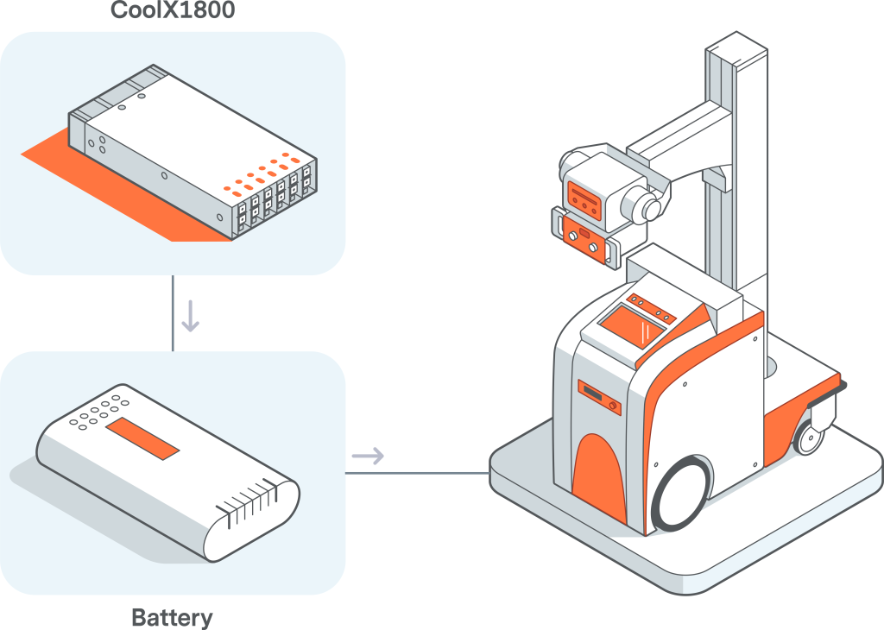Top 4 Medical Industry Trends From MD&M West 2023
已发布 三月 16, 2023 由 Dermot Flynn

Advanced Energy recently attended the Medical Device & Manufacturing West (MD&M West) trade show on February 6-9 in Anaheim, CA. This year, MD&M West gathered over 1,500 exhibitors and 15,000+ attendees from the medical industry – from top medical devices and equipment makers, power supply providers, thought leaders and engineers. Over the span of four days, Advanced Energy’s team exhibited on the show floor, engaged with industry leaders and observed the latest trends driving the medical industry.
The medical industry is experiencing an exciting transformation, driven by recent breakthroughs in Artificial Intelligence (AI), increased decentralization of care, as well as the miniaturization of technologies that power medical devices. The COVID-19 pandemic stressed the need to establish a method of delivering acute and scheduled care outside the traditional hospital environment. This will drive increased deployment of home healthcare equipment, improved data acquisition, as well as further advances on communications technology in medical equipment.
Here are some key trends we observed at MD&M West 2023:
1. Increased Adoption of Batteries in Medical Equipment
According to a 2023 report by Future Market Insights, the global portable medical devices market is projected to grow from $59.3 billion in 2023 to $163.8 billion by 2033 – a CAGR of 10.7%. There is an increasing need for batteries as patient care becomes more decentralized. Medical devices, ranging from health wearables and in vivo parts such as pacemakers to patient monitoring and diagnostics equipment, are increasingly being used on the go.
This shift presents a unique set of challenges. Battery safety, lifetime, charging capacity and size are increasingly critical for medical device system performance. Medical device and equipment makers are demanding ever smaller, more powerful and reliable power solutions. In addition, increasing demand for electric vehicles (EVs) results in limited battery cells for medical equipment.
2. Point-of-Care Treatment Impacts Equipment Design
The decentralization of care also means that point-of-care and at-home devices are in increasing demand. The medical equipment industry is focusing on smaller, more portable devices that can be used either at home, or in smaller clinics and ambulatory environments. Equipment use in these “less controlled” environments will have a significant impact on equipment design from a safety and Electro-Magnetic (EMI) perspective.

In this dynamic environment, it’s more important than ever to engage with strategic partners and collaborate early in the design and development process to identify each application’s differentiated needs. Advanced Energy’s Customer Experience Centers (CEC) work with customers around the world to solve design challenges throughout their product lifecycle. Our Sharon, MA center services our medical customers with an experienced engineering team as well as sophisticated EMI, thermal and electronic test equipment. Read more about Advanced Energy’s network of CECs here.
3. AI Expands Into Diagnostics, Prevention and Therapy
Recent breakthroughs in Artificial Intelligence (AI) technologies have occupied headlines for the past weeks. Beyond the chatbots and the “smart search” capabilities widely covered in the media, AI enabled Machine Learning (ML) offers potential upsides in the medical industry.
Several AI and ML technologies already exist to assist with the medical diagnostics process. According to the U.S. Government Accountability Office, diagnostic errors affect more than 12 million people in the U.S. each year, costing $100 billion. Using AI and ML results in earlier detection of diseases, as well as more consistent and accurate data analysis. Because of their use in medical settings, these technologies require FDA reviews.
In imaging applications, benefits of AI extend beyond reducing diagnosis time. Shorter scans mean lower patient exposure to radiation. Smart detection and classification of images help to accelerate time to treatment, which helps improve patient care and outcomes.
4. Big Data and Analytics Enter the Realm of Healthcare
Big Data and analytics offer promising applications in the medical industry, enabling improved patient outcomes, personalized care and even reduced treatment costs. Big Data applied to a population can potentially help manage and prevent disease outbreaks, as demonstrated by Taiwan’s early COVID-19 pandemic response program.
While some devices such as fitness trackers are already documenting our personal data, assembling health information on a large scale and integrating it within existing medical systems raise security and data privacy concerns. Securing patient information and the integrity of networks is a first step in implement Big Data and analytics in healthcare.

These trends underline the need for the medical industry for continued innovation in technology – from AI, ML and big data to hardware improvements. Reliability continues to be a critical requirement in medical equipment design and development. With the rise of Big Data and analytics in healthcare, reliability now extends to system security as well.
With over 40 years of leadership in power conversion, measurement and control solutions, Advanced Energy continues to enable our customers’ innovations with a broad portfolio of medical standard, custom and configurable products. Designed to meet current and future international safety certifications, our high-efficiency, high-performance power supplies feature unrivalled reliability for medical applications across the entire continuum of care.



